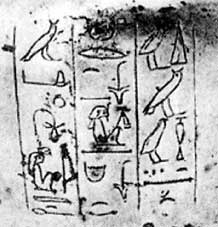|
|
|
|
In July 1916, local Egyptians discovered a tomb belonging to three 'princesses' dating to the time of Tuthmosis III - although they were actually three minor wives and originally came from Syria. The tomb was discovered after heavy rainfall, the water cascading down the cliff face was seen to disappear into the tomb - although the effect of this rain over the centuries had damaged much of the tombs contents (the wooden coffins, for example, were still recognisable but had been completely rotted by damp). The locals quickly emptied the tomb, and the contents were to eventually find their way to the Metropolitan Museum of Art in New York.
Who were the three princesses? Their names were Menhet, Menwi and Merti, they were young Syrian girls who were probably daughters of Chieftains. They most probably came to Egypt as part of a 'diplomatic package' given to Tuthmosis as tribute after his successful campaigns in Syria and surrounding areas, and so the princesses became part of the harem of Tuthmosis III (although each of the princesses did hold the title of King's Wife). Treasure in the tomb As well as the royal headdresses (this type of headress indicates their lower status within the royal family - more senior queens would wear the Mut Vulture headdress), other items from the tomb include earrings, broad collars, necklaces, amulets, bracelets, finger rings, finger and toe stalls, metal sandals, canopic jars and precious metals, glass and stone.
|







